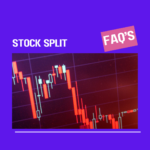What are the types of share buybacks?
1️⃣ Tender Offer Buyback
The company offers to buy shares from shareholders at a fixed price (usually at a premium to the market price). Shareholders can choose to accept or reject the offer. If more shares are tendered than required, buyback happens on a pro-rata basis. ✅ Example: Infosys and TCS have used the tender offer method for share buybacks.
2️⃣ Open Market Buyback
The company repurchases shares directly from the stock exchange over a period of time. Buyback price fluctuates based on market conditions. Unlike the tender offer, shareholders cannot participate directly. ✅ Example: Reliance Industries has conducted open market buybacks in the past.
3️⃣ Stock Exchange Buyback
A specific category of open market buyback where the company buys shares using stock exchange mechanisms. Companies can place buy orders on the exchange during market hours. ✅ Example: Companies use BSE/NSE buyback windows for repurchases.
4️⃣ Buyback from Employees (ESOP Buyback)
The company repurchases shares issued under Employee Stock Option Plans (ESOPs). Helps employees monetize their stock options. ✅ Example: Startups and tech companies often use ESOP buybacks.
Why do companies opt for share buybacks?
✅ 1️⃣ Boost Earnings Per Share (EPS) – A buyback reduces the total number of outstanding shares, increasing EPS, making the company appear more profitable.
✅ 2️⃣ Increase Shareholder Value – Companies often buy back shares when they believe their stock is undervalued, leading to higher stock prices.
✅ 3️⃣ Better Utilization of Surplus Cash – If a company has excess cash and limited investment opportunities, buybacks offer a way to return value to shareholders instead of paying dividends.
✅ 4️⃣ Tax-Efficient Alternative to Dividends – Shareholders may face lower tax liability on capital gains from buybacks compared to dividends, which are taxed as income.
✅ 5️⃣ Prevent Hostile Takeovers – By reducing publicly available shares, buybacks increase promoter shareholding, making it harder for outsiders to gain control of the company.
✅ 6️⃣ Improve Return on Equity (ROE) – Since equity capital decreases after a buyback, ROE and other financial ratios improve, making the company look more attractive to investors.
✅ 7️⃣ Market Confidence & Signal of Strength – A buyback signals that the company believes in its growth prospects, boosting investor confidence.
✅ 8️⃣ Adjust Capital Structure – Companies use buybacks to balance debt and equity, optimizing their capital structure.
How does a buyback impact earnings per share (EPS) and share price?
✅ 1️⃣ Increase in EPS (Earnings Per Share) – A buyback reduces the total number of outstanding shares, while the company's net profit remains the same, resulting in a higher EPS. This makes the company appear more profitable.
✅ 2️⃣ Potential Rise in Share Price – Higher EPS often leads to an increase in stock price as investors perceive the company as more valuable. Also, buybacks signal confidence, attracting buyers, which pushes prices up.
✅ 3️⃣ Reduced Supply, Increased Demand – Fewer shares in the market create scarcity, leading to higher demand and price appreciation.
✅ 4️⃣ Short-Term vs. Long-Term Impact – In the short term, stock prices may rise due to investor optimism, but in the long term, it depends on whether the company effectively utilizes its remaining capital.
What are the benefits of a buyback for shareholders and promoters?
✅ 1️⃣ Higher Earnings Per Share (EPS) – Since buybacks reduce the number of outstanding shares, EPS increases, making each share more valuable.
✅ 2️⃣ Potential Stock Price Appreciation – A buyback signals confidence in the company’s future, often leading to higher stock prices, benefiting shareholders.
✅ 3️⃣ Tax Efficiency for Shareholders – Unlike dividends (which are taxed as income), buybacks provide gains in the form of capital appreciation, which may be taxed at a lower rate.
✅ 4️⃣ Improved Return on Equity (ROE) – A buyback reduces equity capital, improving financial ratios like ROE and Return on Assets (ROA), making the company look more attractive.
✅ 5️⃣ Liquidity for Shareholders – Investors looking to exit get a profitable exit opportunity, especially in tender offer buybacks where shares are purchased at a premium.
✅ 6️⃣ Increased Promoter Holding – If promoters do not participate in the buyback, their ownership stake increases, strengthening control over the company.
✅ 7️⃣ Protection Against Hostile Takeovers – With fewer publicly available shares, it becomes harder for an outsider to acquire a significant stake in the company.
What is the maximum percentage of shares a company can buy back?
✅ 1️⃣ Annual Limit – A company can buy back up to 25% of its total paid-up equity capital and free reserves in a financial year.
✅ 2️⃣ Post-Buyback Shareholding – The debt-to-equity ratio after the buyback should not exceed 2:1 (except for NBFCs and housing finance companies, where the limit is 5:1).
✅ 3️⃣ Minimum Gap Between Buybacks – A company cannot launch another buyback for at least one year from the date of the previous buyback closure.
✅ 4️⃣ Maximum Buyback Through Open Market – When using the open market route, a company can buy back up to 15% of total paid-up equity capital and free reserves.
How is the buyback price determined?
The buyback price depends on the method used and market conditions. Companies consider multiple factors when deciding the price:
✅ 1️⃣ Tender Offer Route – The company offers a fixed price, usually at a premium to the market price, to attract shareholders. The price is based on:
- Recent stock performance
- Fair value of shares
- Premium over the average market price
- Company’s financial position
✅ 2️⃣ Open Market Route – The company buys shares from the stock exchange at prevailing market prices, which fluctuate based on supply and demand. The final buyback price depends on:
- Market movements
- Company’s buying strategy
- Liquidity and investor participation
✅ 3️⃣ Reverse Book Building (For Voluntary Delisting) – Shareholders place bids at prices they are willing to sell, and the company determines the final buyback price based on demand.
How can retail investors participate in a buyback offer?
Retail investors can participate in a buyback through the Tender Offer Route or Open Market Buyback, depending on the method chosen by the company.
✅ 1️⃣ Tender Offer Buyback (Most Common for Retail Investors)
- The company announces a buyback price and record date.
- Shareholders holding shares on the record date are eligible to participate.
- Investors must tender (offer) their shares through their broker in the buyback window.
- If the number of shares tendered exceeds the buyback limit, shares are accepted on a pro-rata basis.
- Accepted shares are debited from the investor’s Demat account, and the payment is credited to their bank account.
✅ 2️⃣ Open Market Buyback
- The company buys shares from the stock exchange over time at prevailing market prices.
- Investors cannot directly participate—they can only sell their shares in the market like a regular transaction.
✅ 3️⃣ Things to Keep in Mind
- Check the record date to ensure eligibility.
- Understand the acceptance ratio (higher promoter participation means lower acceptance for retail investors).
- Consider tax implications before selling shares in a buyback.
How does a company conduct a buyback through the tender offer route?
✅ 1️⃣ Board Approval & Public Announcement – The company's board approves the buyback, specifying the price, number of shares, and record date. A public announcement is made within two working days.
✅ 2️⃣ Record Date Declaration – The company sets a record date, which determines which shareholders are eligible for the buyback offer. Only shareholders holding shares on this date can participate.
✅ 3️⃣ Dispatch of Offer Letter – The company sends an offer letter to eligible shareholders with details of the buyback, including the buyback price, offer period, and procedure.
✅ 4️⃣ Tendering of Shares by Shareholders – Eligible investors submit their shares through their Demat account and registered broker within the buyback window (usually 10 working days).
✅ 5️⃣ Acceptance & Pro-Rata Allocation – If the number of shares tendered exceeds the buyback size, shares are accepted on a pro-rata basis (each investor gets a portion accepted based on total applications).
✅ 6️⃣ Settlement & Payment – The company debits accepted shares from investors' Demat accounts and pays them directly via their linked bank accounts. Unaccepted shares are returned.
✅ 7️⃣ Post-Buyback Compliance – The company extinguishes (cancels) the repurchased shares and submits a compliance report to SEBI.
What is an open market buyback, and how is it executed?
✅ 1️⃣ Board Approval & Public Announcement – The company’s board approves the buyback, specifying the maximum price and total buyback size. A public announcement is made.
✅ 2️⃣ Stock Exchange Mechanism – The company places buy orders through a broker on recognized stock exchanges (like NSE/BSE in India). The buyback window remains open for a longer period (usually up to 6 months).
✅ 3️⃣ Market-Based Pricing – Shares are repurchased at prevailing market prices, meaning the actual buyback price fluctuates. The company cannot exceed the maximum buyback price announced.
✅ 4️⃣ Daily Buyback Reporting – Companies must disclose daily buyback progress to ensure transparency.
✅ 5️⃣ Share Cancellation – Shares bought back are extinguished (cancelled), reducing total outstanding shares.



